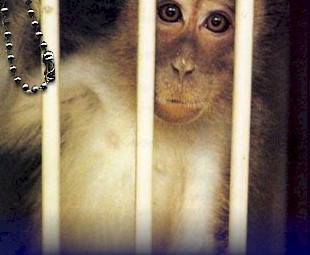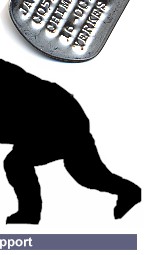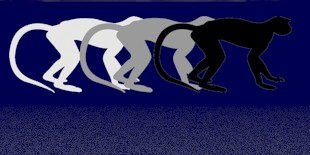Who is Seymour Levine?
Fall, 2000
Levine has just published his
newest paper on the minutia of neurochemical imbalance induced
through early social disruptions and/or maternal stress in
squirrel monkeys.
In this paper, Influence of psychological variables on the
activity of the hypothalamic-pituitary-adrenal axis (European
Journal of Pharmacology, 2000, September 29), Levine continues
to document the long-term, sometimes life-long, metabolic
vulnerability of infants who experience early emotional distress.
Levine writes, "The interaction of the developing rodent
or primate with their primary care giver has permanent long-term
effects on the HPA axis. Manipulations that alter maternal
behavior during critical periods of development permanently
modify the HPA axis. The HPA axis can be programmed to be
hypo-responsive or hyper-responsive as a function of time
and length of maternal separation. In the adult organism,
the HPA response to stress is highly dependent on specific
psychological factors such as control, predictability, and
feedback. In primates, social variables have been shown to
diminish or exacerbate the HPA stress response."
A sampling of Levine's publishing history shows that he has
spent a lifetime hurting baby animals and cashing in on the
public's confused notion of research and our gullible belief
that important knowledge always results from any macabre sacrifice
of animals. In Levine's defense it must be noted that much
of society holds the baseless belief that all scientific experimentation
is good, ethical, productive scientific research. Some portion
of this confused public is likely to, themselves, become practitioners
of this system; they believe in it. We must pray, in order
to maintain respect or hope for our culture and species, that
Levine is a victim of the system that validates and rewards
repetitive and meaningless cruelty when it poses in white
coats.
But Levine is guilty of a pedantic faith in the value of
his research; a position that flies in the face of the scientific
method, and one that would be scorned in most branches of
real, as opposed to pseudo-science. Levine was interviewed
by the Pulitzer prize winning news writer, Deborah Blum, in
preparation for her award winning Monkey Wars. The
interview, in the Fall 1992 Research Reporter (Vol. 22 No.2)
is illustrative of the mindset of primate vivisectors in general.
Blum wrote: "A few scientists were almost astonishingly
open . . . Seymour Levine, a Stanford University biologist
and a favorite target of the animal rights movement, was equally
prompt in agreeing to talk. Levine works in the controversial
area of maternal deprivation, separating infant monkeys from
their mothers. He has been picketed, leafleted and hung in
effigy for almost a decade. But he spent hours with me, talking
about his work, taking me to see his squirrel monkeys, determined,
he said, not to let anyone devalue his studies."
But the "devaluation" of Levine's studies is shown
by the absence of benefit to others stemming from his life's
work. Levine is cited commonly in studies that repeat the
demonstration that animals can be permanently damaged when
distressed at an early age, but the frequency of such citations
falls precipitously in literature dealing with human children.
By 1968, Levine had risen to the top of the "psychobiology
of development" food chain. The psychobiology of development,
as an animal-based research endeavor, often focuses on the
long-term results of harming infants. Levine co-edited the
extensive text, Early Experience and Behavior, in 1968.
(Levine and Newton, Thomas Books, Springfield, Illinois. 18
chapters, multiple contributors, 718 pages).
Levine's early work focused on harming rat pups in various
ways and then documenting the psychobiological effects of
that harm. Writing in Early Experience and Behavior,
Levine explained a component of his work at that time, "At
forty-six days of age, half of the rats in each group received
electroconvulsive shock. Twenty-four hours later, blood samples
were obtained from all animals and glucose concentration was
measured," ("Hormones in Infancy," in Early
Experience and Behavior, page 174).
He began "Hormones in Infancy" with the explanation
of work he had conducted in 1956, "Early research (Levine
et al., 1956) on infantile experience dealt with rats treated
in infancy either by simply picking them up once daily and
placing them in a different environment for three minutes,
or by giving them three minutes of electric shock daily until
they were weaned at twenty-one days." ("Hormones
in Infancy," in Early Experience and Behavior,
page 168).
In 1978 he published "Prolonged cortisol elevation
in the infant squirrel monkey after reunion with mother."
(Physiology and Behavior, 1978, Jan) which he co-authored
with Chris Coe, now director of the infamous Harlow Primate
Psychology Lab in Madison, Wisconsin. Levine has been a frequent
collaborator of Coe's.
A short list of papers Levine either authored or co-authored
serve as mile posts along a wasted career:
· Mother-infant attachment in the squirrel monkey:
adrenal response to separation. (Behavioral Biology, 1978,
Feb)
· Separation distress and attachment in surrogate-reared
squirrel monkeys. (Physiology and Behavior, 1979, Dec)
· Behavioral and pituitary--adrenal responses during
a prolonged separation period in infant rhesus macaques. (Psychoneuroendocrinology,
1981)
· Hormonal responses accompanying fear and agitation
in the squirrel monkey. (Physiology and Behavior, 1982, Dec)
· Social and environmental factors influencing mother-infant
separation-reunion in squirrel monkeys. (Physiology and Behavior,
1985, Apr)
· Effect of maternal separation on the complement
system and antibody responses in infant primates. (International
Journal of Neuroscience, 1988 Jun)
· Behavioral and physiological responses to maternal
separation in squirrel monkeys (Saimiri sciureus). (Behavior
and Neuroscience, 1990, Feb)
· Behavioral and physiological responses of mother
and infant squirrel monkeys to fearful stimuli. (Developmental
Psychobiology, 1992, Mar)
· Early experience effects on the development of fear
in the squirrel monkey. (Behavioral and Neural Biology, 1993,
Nov)
· Separation induced changes in squirrel monkey hypothalamic-pituitary-adrenal
physiology resemble aspects of hypercortisolism in humans.
(Psychoneuroendocrinology, 1999, Feb)
|












